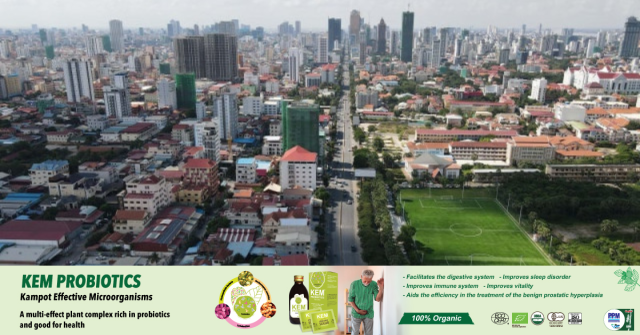Climate Impacts Could Have Further Ripple Effects on Cambodia's Economy: WB

- By Xinhua News Agency
- October 31, 2023 8:00 PM
PHNOM PENH-- Climate projections suggest that future flood risk and heat stress will worsen in Cambodia if proper actions have not been taken to address these impacts, said a World Bank's Cambodia Country Climate and Development Report released here on Tuesday.
"Without proper adaptation and mitigation measures, climate change could cost up to 9 percent of Cambodia's GDP by 2050 while increasing the poverty rate by up to 6 percentage points by 2040," the report said.
Cambodia is already heavily affected by climate change, the report said, adding that increased variability in rainfall patterns is causing more frequent droughts and more frequent and intense floods.
It highlighted that a severe drought in 2015 and 2016 affected 18 of 25 provinces and impacted over 2.5 million people, and rice production losses caused by droughts associated with the 2019 El Nino were estimated at 100 million U.S. dollars.
Also, in September 2022, the heaviest rainfall in three years caused severe flooding in 14 provinces, with some 85,000 households affected and landslides that led to the evacuation of 5,000 households.
Mariam Sherman, World Bank country director for Cambodia, Myanmar, and Laos, said ensuring sustainable economic growth and meeting the demands of climate change are intertwined challenges for Cambodia.
"Increasing economic competitiveness, building human capital, and investing in climate resilience will benefit all Cambodians," she said at the event.
Cambodia has pledged to meet carbon neutrality by 2050, the report said, adding that achieving this ambitious goal will require rapidly reversing deforestation and steering the energy, transport, and industrial sectors onto a lower carbon growth path.
The report said that rapid cost declines for clean energy technologies globally, including solar energy, present further opportunities for the Southeast Asian country.
The share of solar in Cambodia's installed power generation capacity has increased sharply from near zero in 2016 to 12.5 percent in 2021, it said, adding that solar energy costs in Cambodia are projected to decline further, making it an attractive option for the country's energy needs.















